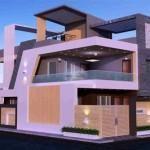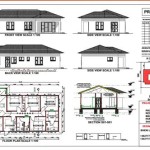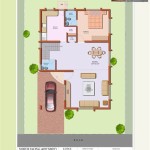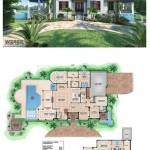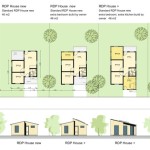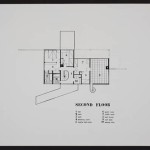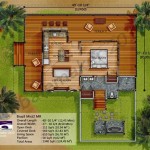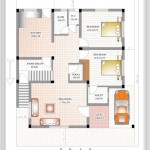Plantation Style House Floor Plans: A Timeless Architectural Statement
Plantation-style house floor plans evoke a sense of Southern charm, grandeur, and historical significance. Characterized by their symmetrical facades, expansive porches, and emphasis on natural light and ventilation, these designs represent a distinct architectural period that continues to influence contemporary residential construction. Understanding the core features, variations, and considerations involved in planning a plantation-style house is essential for those seeking to create a home that embodies this elegant aesthetic.
The term "plantation-style" refers to the architectural vernacular that developed in the Southern United States, particularly during the 18th and 19th centuries. These homes were often the centerpieces of large agricultural estates, reflecting the wealth and social status of their owners. While the historical context of plantations is complex and often associated with a difficult past, the architectural style itself has been adapted and reinterpreted in modern construction to offer a comfortable and aesthetically pleasing living environment.
Modern interpretations of plantation-style homes prioritize the architectural elements while acknowledging the need for contemporary functionality and comfort. Sustainable building practices, energy efficiency, and updated material choices are incorporated to create homes that are both beautiful and practical. These updated designs offer a connection to the past while catering to the needs of modern families.
Key Architectural Characteristics of Plantation-Style Homes
Several defining features distinguish plantation-style houses. These characteristics contribute to the overall aesthetic and functionality of the design, creating a sense of spaciousness, elegance, and connection to the surrounding landscape.
Symmetrical Facade: One of the most recognizable elements of plantation-style architecture is the symmetrical facade. The front of the house is typically balanced, with a central entrance and an equal number of windows and architectural features on either side. This symmetry creates a sense of formality and order, reflecting the importance of balance in classical design principles.
Grand Porches: Expansive porches, often wrapping around the entire house or at least the front facade, are another hallmark of plantation-style homes. These porches provide shaded outdoor living space, offering a place to relax, entertain, and enjoy the surrounding landscape. Columns, railings, and intricate detailing often adorn the porches, adding to the grandeur of the design.
Tall Columns: Columns are a prominent feature, typically supporting the porch roof and adding verticality to the facade. These columns are often Doric, Ionic, or Corinthian in style, reflecting classical architectural influences. The size and number of columns contribute to the overall scale and presence of the house.
High Ceilings and Large Windows: High ceilings and large windows are designed to maximize natural light and ventilation, essential in the hot and humid Southern climate. These features create a sense of spaciousness and airiness, making the interior feel comfortable and inviting. Large windows also offer views of the surrounding landscape, connecting the interior to the exterior environment.
Formal Entryway: The entryway is a focal point of the house, often featuring a grand staircase and impressive architectural details. The entryway serves as a welcoming space for guests and a transition point between the exterior and interior. It often reflects the overall style and elegance of the house.
Common Plantation-Style Floor Plan Layouts
Plantation-style floor plans typically emphasize spaciousness, functionality, and a clear separation between public and private areas. Several layouts are commonly seen, each offering a unique arrangement of rooms and spaces.
Central Hallway Plan: This layout features a long central hallway that runs through the center of the house, connecting the front and back. Rooms are arranged on either side of the hallway, providing easy access to all areas of the house. This plan is conducive to both formal entertaining and everyday living, offering a clear separation between living spaces and bedrooms.
Side-Hall Plan: In this layout, the main hallway is located to one side of the house, rather than in the center. This can allow for larger, more open living spaces on the opposite side of the hallway. The side-hall plan can be beneficial for maximizing natural light and creating a more informal living arrangement.
Open Concept Adaptation: While traditional plantation-style homes often featured distinct rooms, modern adaptations sometimes incorporate open-concept living areas. This can involve combining the living room, dining room, and kitchen into a single, large space. This allows for greater flexibility in furniture arrangement and creates a more social and interactive living environment.
Two-Story Designs: Many plantation-style homes are two-story structures, with the bedrooms typically located on the upper floor. This configuration separates the sleeping areas from the more public living spaces on the ground floor. A grand staircase often connects the two floors, serving as a focal point of the entryway.
Separate Kitchen and Service Areas: Historically, plantation homes often had separate kitchens and service areas located away from the main living spaces. Modern designs may incorporate the kitchen into the main living area but still maintain a separate pantry or service entrance for added functionality.
Considerations for Modern Plantation-Style House Design
When planning a plantation-style house in the modern era, several factors need to be considered to ensure that the design is both aesthetically pleasing and functionally appropriate.
Climate and Location: The climate and location of the house should be taken into consideration when choosing materials and design features. In hot climates, features like large porches, high ceilings, and ample windows are crucial for natural ventilation and cooling. In colder climates, insulation and heating systems become more important.
Sustainability and Energy Efficiency: Modern designs should incorporate sustainable building practices and energy-efficient materials. This can include using recycled materials, installing energy-efficient windows and appliances, and incorporating solar panels to reduce energy consumption.
Accessibility and Universal Design: Consider incorporating accessibility features, such as ramps, wider doorways, and accessible bathrooms, to ensure that the house is comfortable and usable for people of all ages and abilities. Universal design principles can be integrated seamlessly into the design without sacrificing the aesthetic appeal of the house.
Budget and Construction Costs: Plantation-style homes can be complex and require specialized craftsmanship, which can impact construction costs. It is important to establish a realistic budget and work with experienced builders and architects who understand the intricacies of this style.
Local Building Codes and Regulations: Ensure that the design complies with all local building codes and regulations. This may involve obtaining permits for construction, meeting specific energy efficiency standards, and adhering to zoning restrictions.
Interior Design: The interior design should complement the architectural style of the house. Traditional plantation-style interiors often feature hardwood floors, elegant furniture, and decorative details. Consider incorporating these elements into the design to create a cohesive and authentic look.
Landscaping: The landscaping should enhance the overall aesthetic of the house. Traditional features include manicured lawns, formal gardens, and mature trees. Consider incorporating these elements into the landscape design to create a welcoming and visually appealing environment.
Historical Accuracy vs. Modern Convenience: A balance must be struck between maintaining historical accuracy and incorporating modern conveniences. While it's admirable to preserve the architectural integrity of the style, it's equally important to ensure the home meets the needs of modern living. For example, integrating modern kitchen appliances while maintaining a traditional aesthetic can be a successful approach.
Material Selection: The choice of materials is crucial in achieving the desired look and feel of a plantation-style home. Traditional materials include wood, brick, and stucco. However, modern alternatives, such as engineered wood and composite materials, can offer greater durability and energy efficiency.
By carefully considering these factors, one can create a plantation-style house that is both beautiful and functional, offering a comfortable and elegant living environment for years to come. The timeless appeal of this architectural style ensures that it will continue to inspire and influence residential design for generations.

Southern Home Plans Plantation Style Wrap Around Porch

House Plan 86207 Plantation Style With 3805 Sq Ft 4 Bed 3 Bat

Plantation House Plans Monster

5 Bedrm 7433 Sq Ft Southern Plantation House Plan 153 1187

House Plan 72163 Plantation Style With 5699 Sq Ft 5 Bed 4 Bat

5 Bedrm 7433 Sq Ft Southern Plantation House Plan 153 1187

House Plan 95058 Plantation Style With 4000 Sq Ft 4 Bed 3 Bat

Southern Home Plans Plantation Style Wrap Around Porch

House Plan 73702 Southern Style With 3653 Sq Ft 5 Bed 4 Bath

Beach Style House Plan 3 Beds 5 Baths 1997 Sq Ft 426 14 Plantation Plans Ranch

